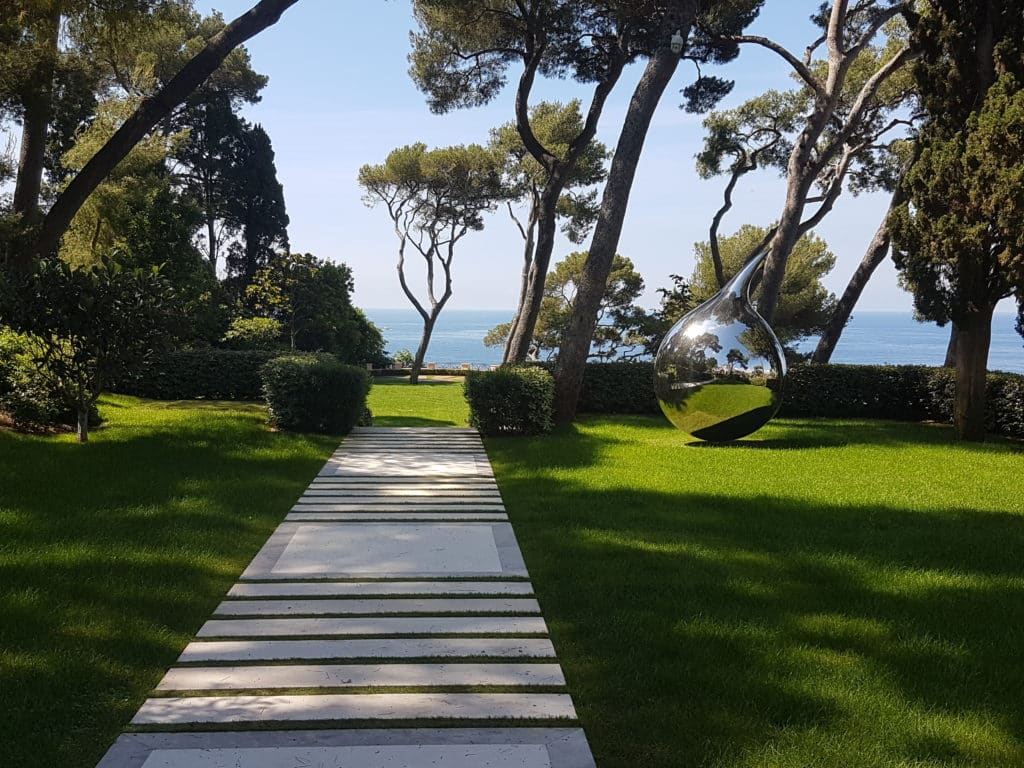Art is not confined to museums. In a garden, it becomes a living mise-en-scène, where nature serves as the canvas and light as the brush. Integrating artworks allows for the creation of a focal point, the expression of identity, and the evocation of emotion. Sculptures, installations, or light-based creations bring rhythm and character to the space. But it’s essential to know how to choose and position them properly. So, how can sculptures be integrated into your garden?
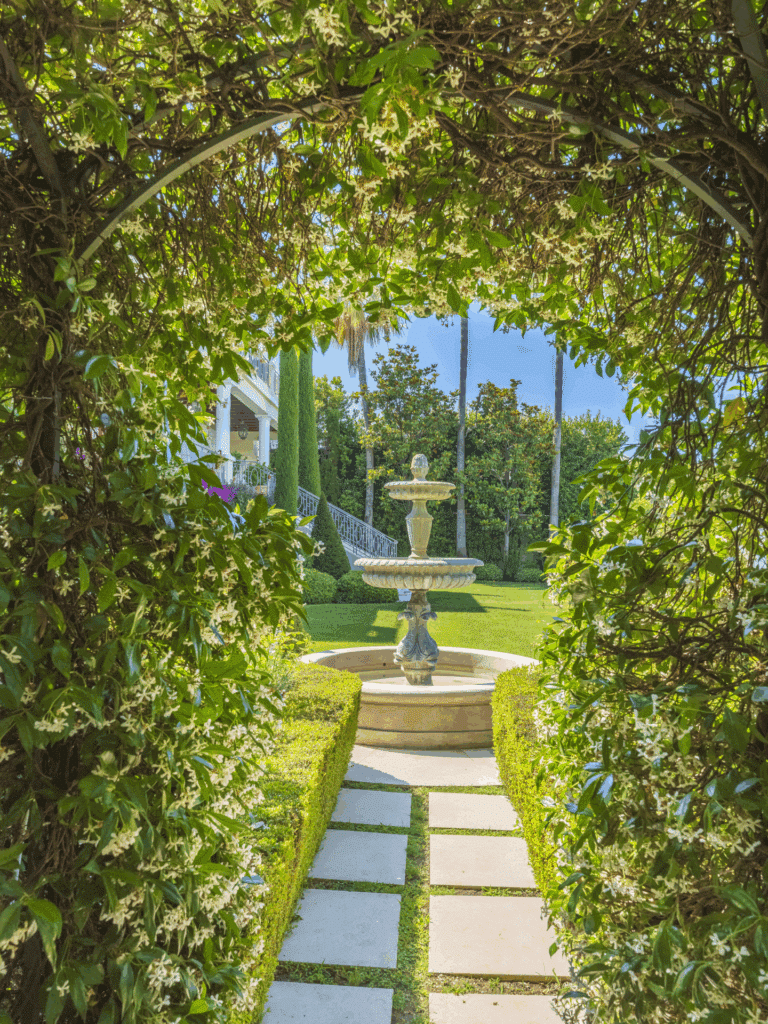
Why integrate artworks into a garden?
A landscape designer works with nature rather than dominating it: they accompany it, listen to it, and enhance it. Still, incorporating a work of art into this living balance might seem paradoxical. Sculpture, shaped by human hands, contrasts with vegetation that grows freely. And it’s precisely this encounter between the natural and the artificial that gives rise to the beauty of an artistic garden.
A sculpture or installation becomes, above all, a focal point. It draws the eye, structures the space, and gives it a unique identity. The artwork acts as a visual landmark, guiding the visitor. It invites one to pause and reveals the spirit of the place.
But art goes beyond aesthetics — it awakens emotion, tells a story, and gives a soul to the garden. Each piece speaks its own language: an antique statue evokes serenity, a contemporary work captures attention, while an abstract piece stimulates the imagination.
Finally, an artwork can transform a unique garden into an exceptional one. By adding a rare and personal touch, it becomes a signature that highlights your taste and sensitivity. Even more, certain pieces enhance not only the beauty of the space but also its real estate and cultural value.
What types of artworks should you choose?
Choosing the right pieces starts with understanding the dialogue they must create with nature.
Sculptures: the timeless, reliable choice
Rooted in the tradition of French formal gardens, sculptures remain the aesthetic foundation of any artistic landscape. Each piece, whether classical or bold, alters the way the garden is perceived.
A stone or marble statue brings nobility and serenity, while a piece in patinated metal or carved wood creates a more contemporary contrast. Material choice is key, as it must withstand weathering and evolve over time. Bronze ages gracefully, corten steel develops a protective rust, and glazed ceramics capture the light.
A well-integrated artwork should not dominate the landscape but rather engage in a dialogue with it, respecting the proportions of the space.
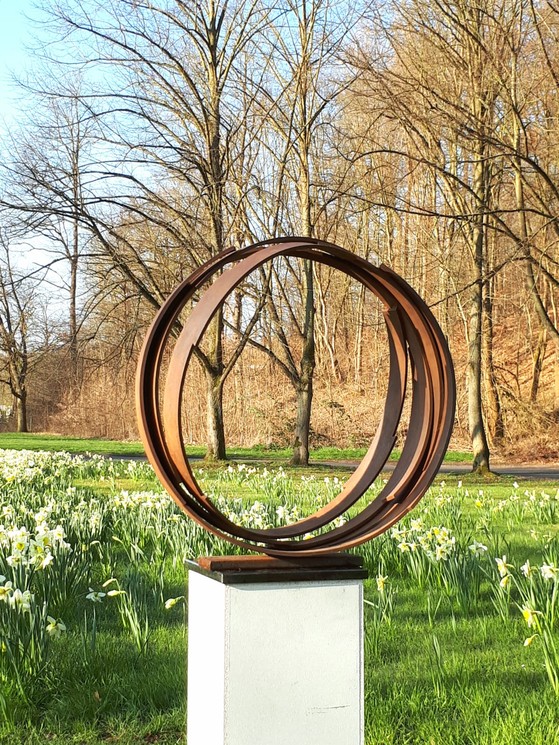
Installations and Land Art: nature as an accomplice
Land Art is a close collaboration between humans and nature. In a garden, dry stones, olive branches, sun-warmed pebbles, or bay leaves become artistic materials. These ephemeral works remind us that beauty often arises from simplicity. Certain creations, like Andy Goldsworthy’s sculpted earth walls or a woven wooden structure, add a unique dimension.
Size and placement play a major role in achieving harmony. A monumental installation made of trunks or bamboo gains strength in an open clearing bathed in light. In contrast, a more intimate piece may hide along a path, between rocks or beneath a pine tree — a secret for the attentive walker.
Light-based and interactive works: magic at dusk
When night falls, the garden takes on a new face. Luminous sculptures, glowing spheres, or LED installations transform the space into a theatrical set where light plays the lead role. These elements reshape the garden’s volumes, highlight tree lines, and animate paths with shadows and reflections.
Some installations react to the visitor’s presence — movement might trigger a light, a sound, or a vibration. The experience becomes immersive, almost magical. Others are more discreet, hidden in the foliage: concealed lanterns, glowing threads woven through branches, or projected silhouettes on a green wall. These works prolong the garden’s enchantment and reveal it in a different light.
Keys to successful integration
The essential steps to a successful layout involve finding the right balance between space, vegetation, and material — so the garden becomes a unified work of art.
Placement and perspective
The choice of location is crucial. A piece must breathe within its environment while guiding the eye. Alternating empty and full spaces creates visual rhythm — a balance between presence and silence. Placed along a path, a sculpture can surprise, sparking the emotion of discovery. On the other hand, a central piece makes a strong first impression and structures the entire garden design.
Harmony with vegetation
Successful integration depends on the dialogue between material and plant life. Raw stone echoes the silvery foliage of an olive tree; patinated metal reflects shimmering water; glass captures the morning light like suspended dew. The artwork should blend with the site’s natural palette, not compete with it.
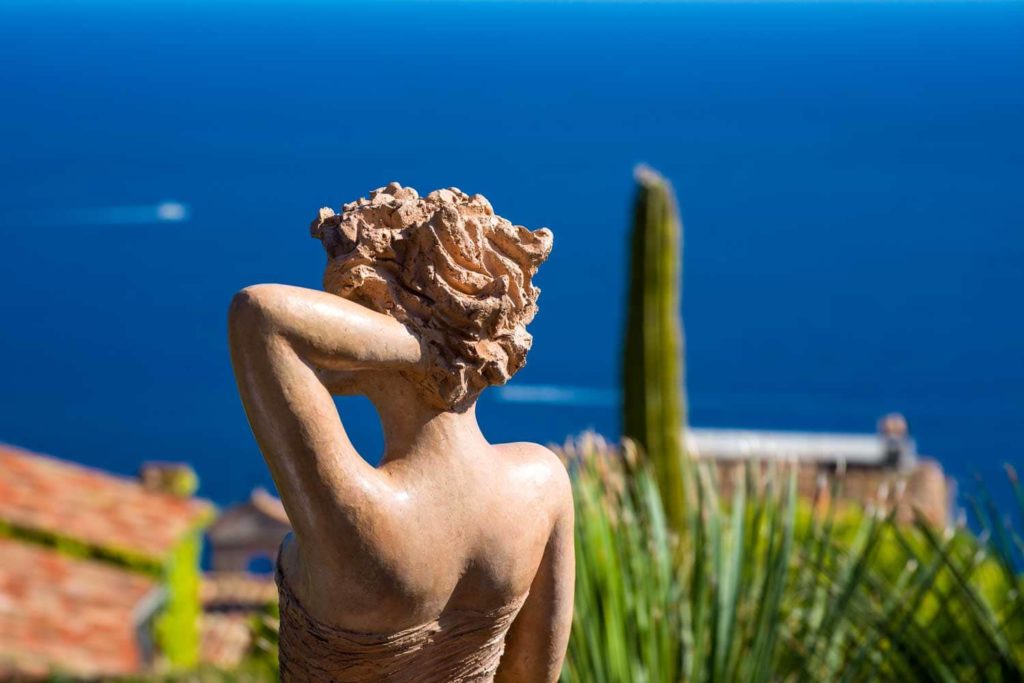
At the Exotic Garden of Èze, for example, feminine sculptures merge with the graphic forms of agaves and aloes, illustrating a perfect symbiosis between art and nature.
Play of light and atmosphere
By day, lighting accentuates shapes and textures. By night, it offers a more intimate reading of the garden. A soft beam on a sculpture, backlighting on an openwork structure, or a diffused glow among the plants transforms the perception of space. Light becomes an extension of the artwork — a bridge between art and nature.
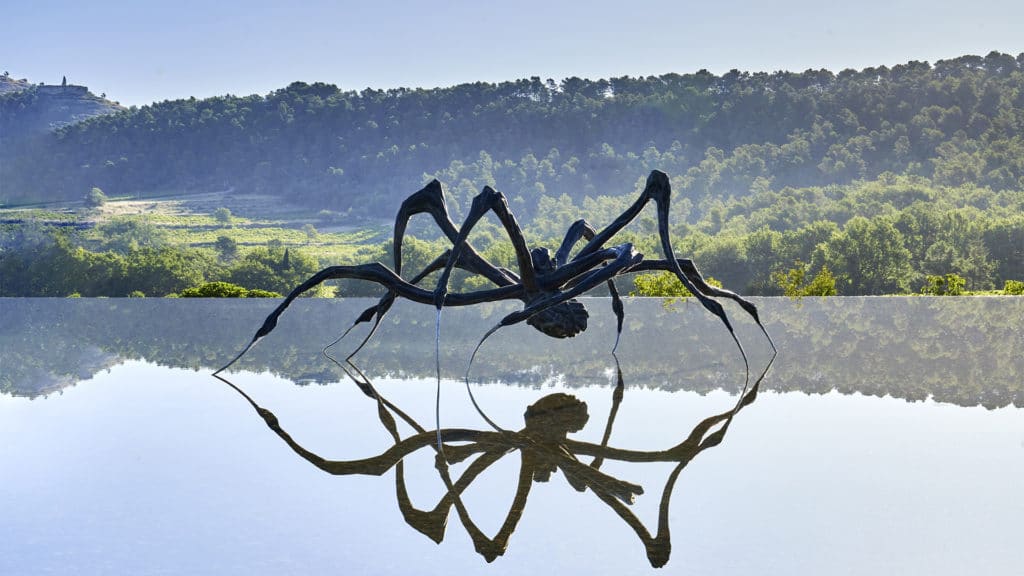
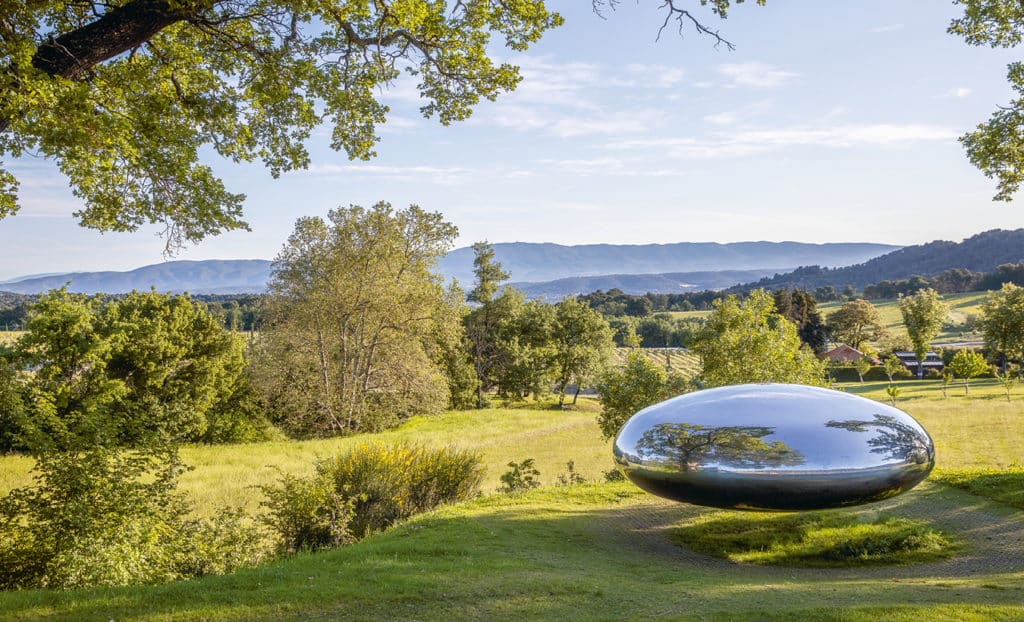
The gardens at Château La Coste are a living example: the artworks change appearance depending on the time of day, playing with the shadows and reflections of the landscape.
Need a healthy dose of inspiration? Let yourself be guided by today’s luxury landscaping trends.
Behind every successful garden lies a vision, expertise, and attentive listening. Entrusting your project to the best landscape designer on the French Riviera means guaranteeing a custom-designed space, thoughtfully crafted down to the smallest detail. Adonis Paysages puts its expertise at the service of your projects.
